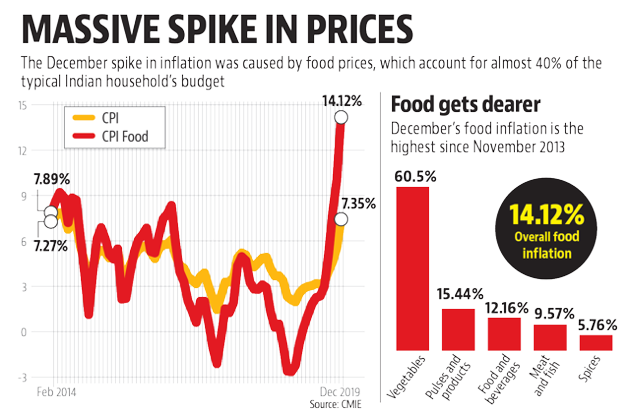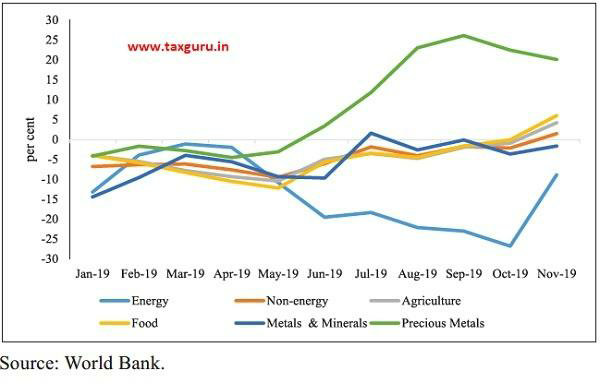Food Inflation is one of the most common phenomena in economics. During the great depression, the fall in aggregate demand caused prolonged changes in food prices. In 2006, when the upturn in International food prices began, the World Food Programme initiated various necessary actions to combat the situation but still, several developing countries such as India and Africa are still facing the problem of food scarcity and inflation. With the pandemic, shortage of food, supply chain disruptions, and the extravagant population of the country has made food inflation quite stubborn across India.

Shutting down of the country caused drastic changes in the supply chain of the food industry including unavailability of labour and raw materials, along with disruption in transportation networks. The lockdown imposed not only affected the supply side of the economy but also plummeted incomes of both rural and urban households leading to fall in demand,which in turn caused a slowdown in the whole economy. India being a country “of the poor”, has been seeing several deaths caused due to lack of food supplies from its origin, however, this time the problem will result in severe damages. The scenario became worse when India faced the locust storms after almost three decades and according to the reports of Union Agriculture Ministry more than ten crore worth of crops were destroyed across three states which disrupted the supply chain in India for particular goods and it is expected that the prices of these commodities will remain high till the end of the year.
India had seen some sort of revival only when the government announced the Pradhan Mantri Garib Kalyan Yojana Package worth 1.7 lakh crore under which 3 kg of rice and wheat were distributed to each family member for the poor along with several other basic necessities. This scheme majorly helped daily wage earners who would have been affected the most if the scheme was not implemented. The package has further been extended till November 2020 to enhance the standard of living of the poor and middle-class citizens.

The food industry in the future will have a different face altogether. “Corona culture” is developing where one’s attitude towards their health and diet has drastically changed. In reality, their entire behaviour towards the food industry and socializing is changing to adjust to the emerging health-conscious world. There has been a huge decline in demand for exotic meat as people are trying to adjust more to vegetarian diets to boost their immune systems. This is becoming a preference rather than a compulsion with time.

Several experts had warned about the food inflation amid the lockdown and we saw the retail food prices soaring up in April as supply-side disruptions and seasonal pressures increased. According to the Ministry of Statistics and Programme Implementation, Food and Beverage inflation rose to 8.6 percent in April 2020, compared to 7.8 percent in March. The rise in the food prices was higher in the rural areas at a rate of 8.8 percent as compared to a rise of 8.32 percent in urban areas majorly due to lack of transportation. Another major reason that led to food inflation was panic buying which became prevalent in this quarantine period. Several countries such as Singapore and Rome witnessed intense panic buying which occurred due to behavioural change over food security which India is also experiencing now. Experts have also suggested that this panic buying is going to continue in the future and because of this food prices are expected to rise further. Whether the corona virus ends or turns into an endemic, people will change their lifestyle to adjust to the virus and food habits will no longer be the same. Food preferences and the culture of going out is likely to see a huge transformation in the times to come.
Written By: VENKATESH BAGRODIA
LITERARY SOURCES: Economic Times, Business Standard, India Today
